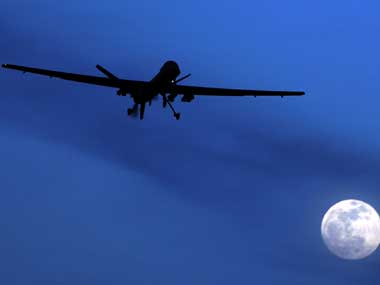Beijing: China has successfully tested high-altitude spy drones which could help it dominate “near space”, a region of the Earth’s atmosphere, a media report said on Tuesday. Near space, which begins at about 20 kilometres above sea level, has until now been regarded a “death zone” for drones due to thin air and extremely low temperatures. At this altitude, thin air makes it hard to generate lift for a drone while extremely low temperature means electronic components, like batteries are prone to fail. However, a new type of China-developed drone that is undergoing testing appears to have overcome such difficulties, marking a significant step towards China’s ambitions of exploiting near space for purposes of military intelligence, Hong Kong-based South China Morning Post reported. Near space has long been seen as a promising frontier for intelligence services, but has remained relatively untapped because it is too high for most airplanes to operate, and too low for satellites. The goal of scientists is to develop a durable near space vehicle capable of observing large areas for weeks, months or even years on end. [caption id=“attachment_4185513” align=“alignleft” width=“380”] Representational image. AP[/caption] Drones, which would cost just a fraction of what a satellite with comparable abilities would cost, are seen as one of the best ways of reaching that goal. Until now, the Northrop Grumman RQ-4 Global Hawk, which can reach to an altitude of about 19 kilometres, has been the highest- flying drone in use. Last month, a research facility in Inner Mongolia successfully tested an experimental drone at an altitude of 25 kilometres, the report said. The test involved two experimental unmanned aerial vehicles being sent up on a high-pressure balloon before being deployed at different altitudes. The second drone was deployed at an altitude of nine kilometres, it said. Each of the drones, which are about the size of a bat, was launched using an electromagnetic pulse that accelerated them from zero to 100 kilometres within a space of about the length of an arm. “It shot out like a bullet,” said Yang Yanchu, lead scientist of the project with the Academy of Optoelectronics at the Chinese Academy of Sciences in Beijing. The drones then glided towards their targets more than 100 kilometres away, adjusting course and altitude in flight without human intervention. On-board sensors beamed data back to a ground station. “The goal of our research is to launch hundreds of these drones in one shot, like letting loose a bee or ant colony,” Yang said. Similar test flights had been conducted by the US Navy and NASA in recent years as America searched for a new weapon to penetrate air defence systems and gather sensitive intelligence behind enemy lines, he said. Yang Chunxin, a professor at the school of aeronautic science and engineering at Beihang University in Beijing, said there were still many challenges in developing high altitude drones. “One of the biggest headaches is the near-vacuum environment, where electric currents can produce a spark. This can lead to shortages and damage electronic equipment,” he said. “This is why high altitude drones are more difficult to build than lower-flying variants. Whether they can play a practical role in military operations remains an open question,” he was quoted as saying by the Post. Significantly, throughout their flights, drones barely left traces on radar due to their small size, the report said. Drones are small enough to fit in a shoebox and weigh about the same as a soccer ball. They are made with composite materials and designed to withstand the forces involved in electromagnetic launches. The sensors include a terrain mapping device and electromagnetic signal detector to locate military presence or activities. “But the drones would not carry cameras,” Yang said, as the transmission of photo or video data over long distances requires bulky antenna, unsuitable for near space launches. Some models, including the early prototype tested in last month’s experiment, did not even have a power motor but would drift to their destinations as a glider would, the report said.
China has successfully tested high-altitude spy drones which could help it dominate “near space”, a region of the Earth’s atmosphere, a media report said on Tuesday.
Advertisement
End of Article


)




